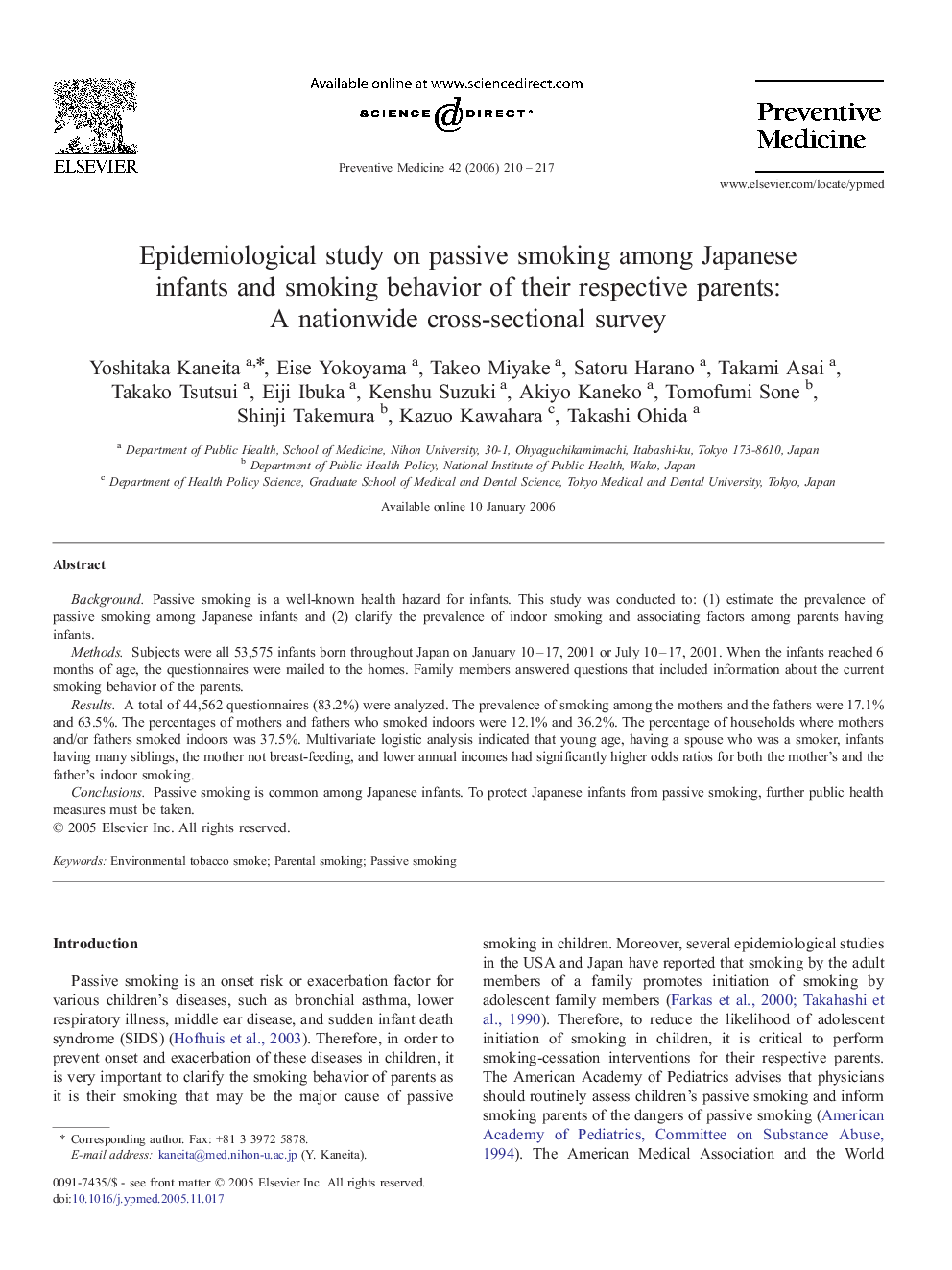| Article ID | Journal | Published Year | Pages | File Type |
|---|---|---|---|---|
| 3102000 | Preventive Medicine | 2006 | 8 Pages |
Background.Passive smoking is a well-known health hazard for infants. This study was conducted to: (1) estimate the prevalence of passive smoking among Japanese infants and (2) clarify the prevalence of indoor smoking and associating factors among parents having infants.Methods.Subjects were all 53,575 infants born throughout Japan on January 10–17, 2001 or July 10–17, 2001. When the infants reached 6 months of age, the questionnaires were mailed to the homes. Family members answered questions that included information about the current smoking behavior of the parents.Results.A total of 44,562 questionnaires (83.2%) were analyzed. The prevalence of smoking among the mothers and the fathers were 17.1% and 63.5%. The percentages of mothers and fathers who smoked indoors were 12.1% and 36.2%. The percentage of households where mothers and/or fathers smoked indoors was 37.5%. Multivariate logistic analysis indicated that young age, having a spouse who was a smoker, infants having many siblings, the mother not breast-feeding, and lower annual incomes had significantly higher odds ratios for both the mother's and the father's indoor smoking.Conclusions.Passive smoking is common among Japanese infants. To protect Japanese infants from passive smoking, further public health measures must be taken.
